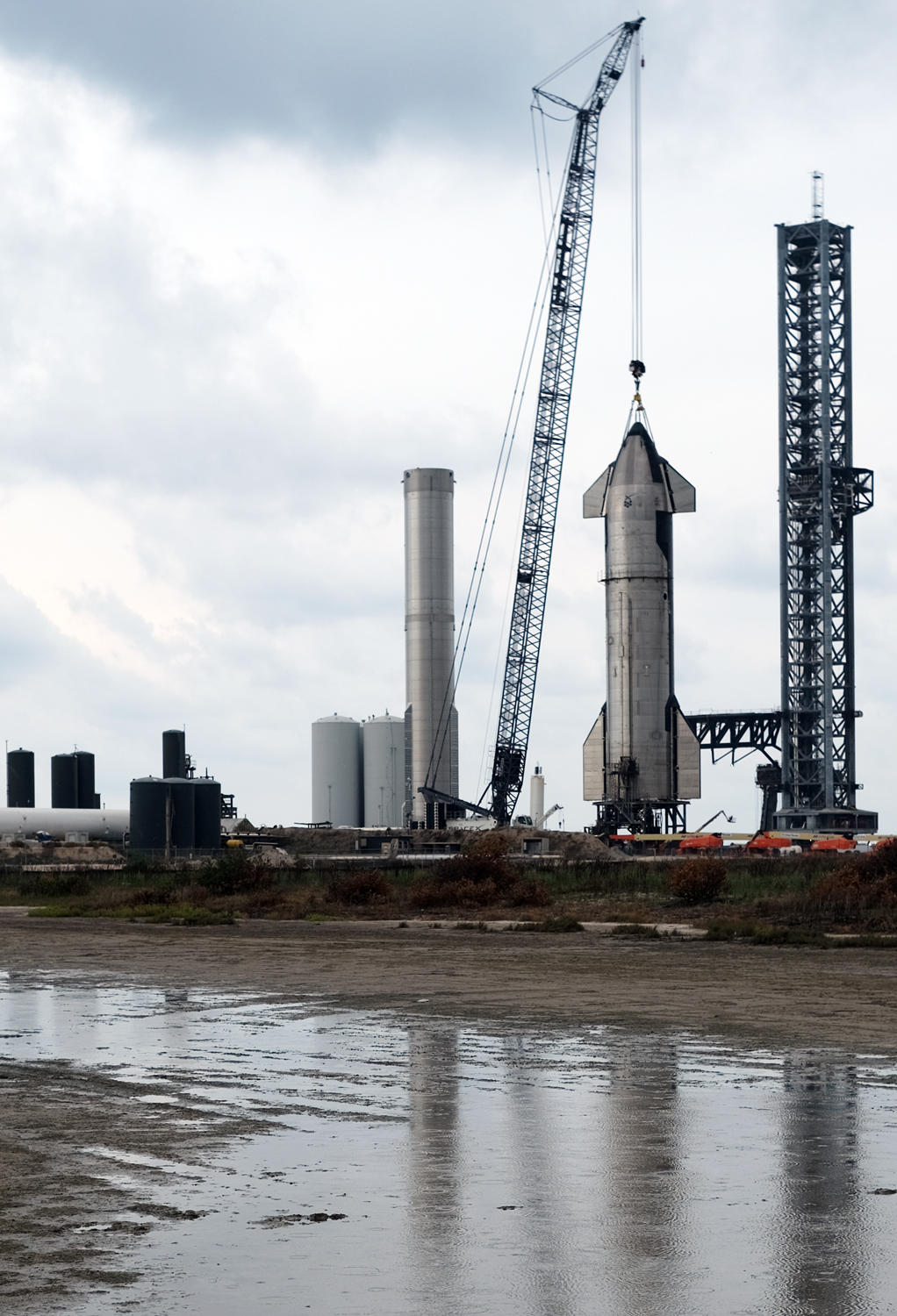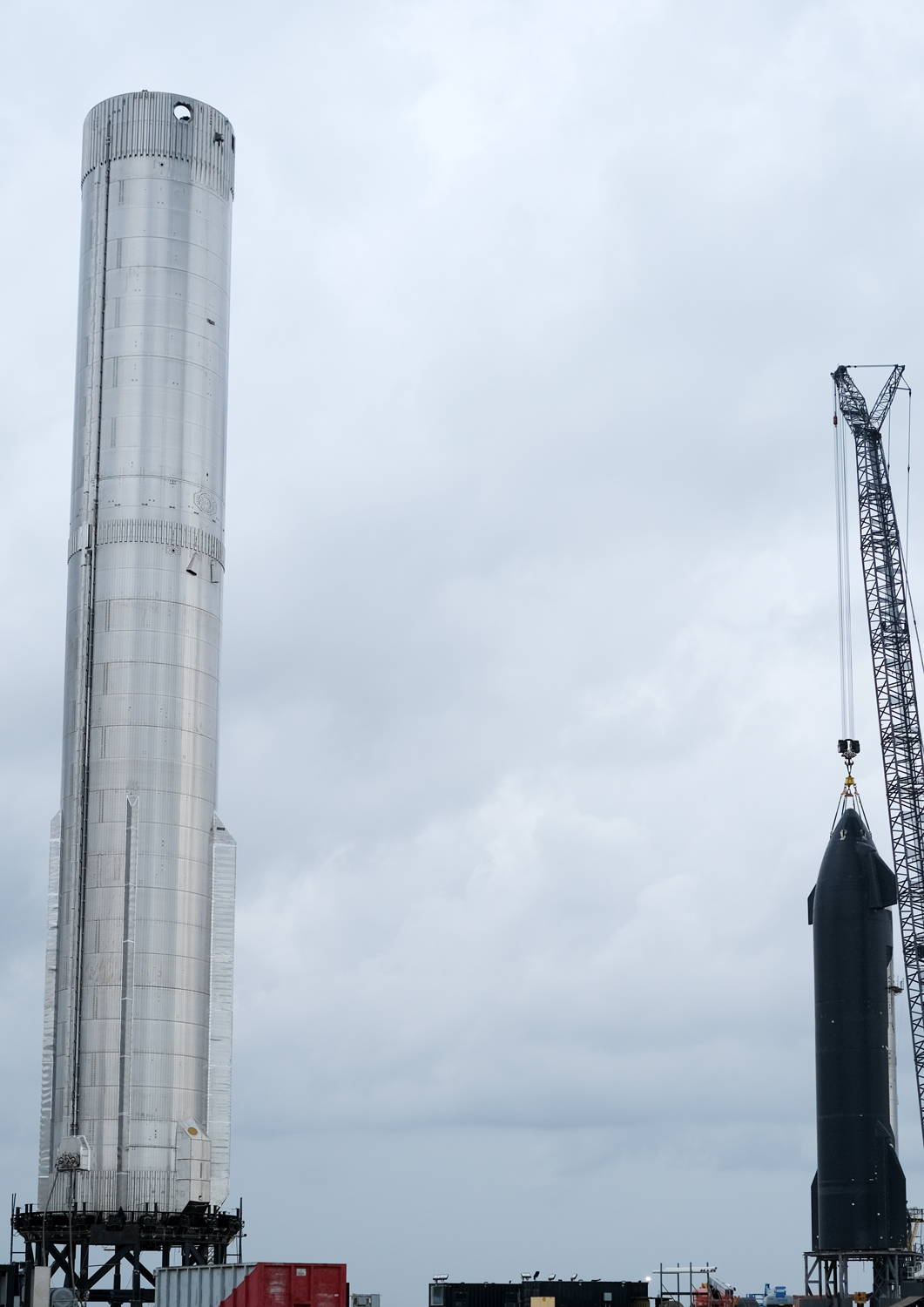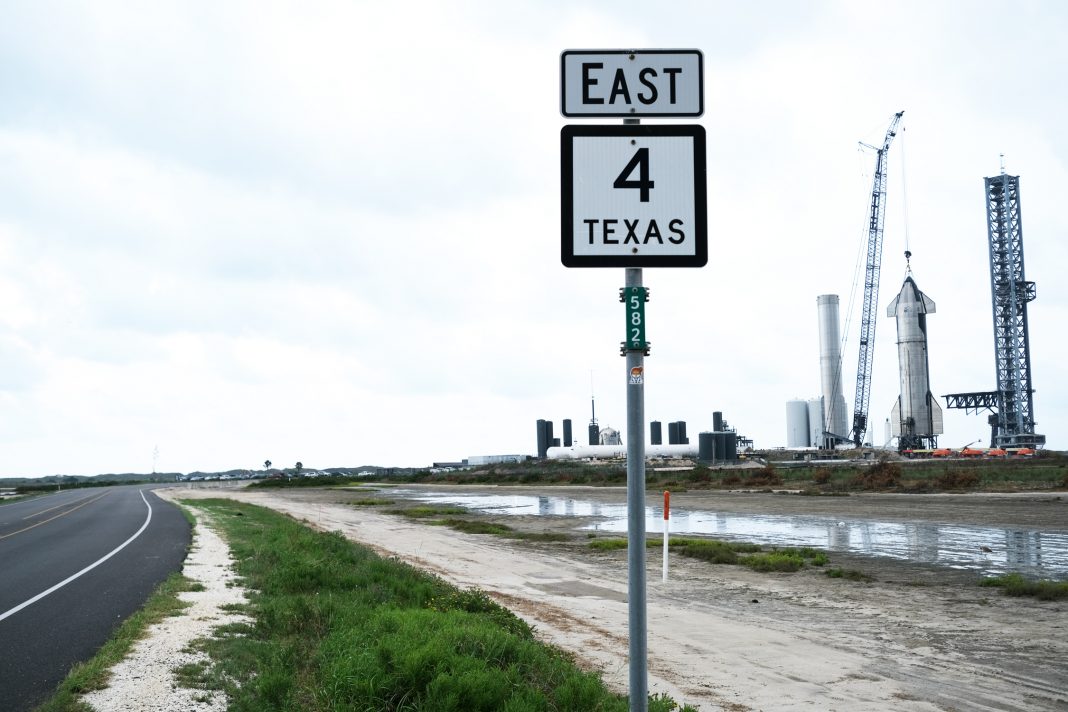The first orbital launch of a Starship prototype could take place from Boca Chica/Starbase as early as late October, though it’s more likely to happen in November, assuming nothing prevents a launch.
So says SpaceX founder and CEO Elon Musk, who in response to a query from a Twitter follower tweeted on Sept. 21 that “November seems highly likely” for an orbital launch.
“We will have two boosters & ships ready for orbital flight by then, with full stack production at roughly one every two months,” he tweeted.
“Full stack” refers to a completed Starship or Super Heavy. The six-engine Starship is the spacecraft intended to one day carry people and cargo to the moon and Mars, while the 33-engine Super Heavy is the booster rocket that would enable Starship to get beyond the pull of Earth’s gravity. If it flies, the Super Heavy will be the largest and most powerful rocket in history to have done so.

The current prototype iterations on tap for the first orbital launch are Starship SN24 and Super Heavy BN7. SpaceX has been conducting engine test on both vehicles at Boca Chica over the past several weeks, including a quick static-fire test of all six SN24 engines on Sept. 8 and a similar test on seven of BN7’s 33 Raptor engines on Sept. 19.
On June 13, after several months of delays, the Federal Aviation Administration released the results of its Final Programmatic Environmental Assessment (PEA) of SpaceX’s plans for Boca Chica regarding Starship development and testing. The FAA issued a Finding of No Significant Impact (FONSI) — a decision that outraged environmentalists and others opposed to SpaceX’s Boca Chica operations, who called for a more comprehensive Environmental Impact Statement. The FAA said it would require SpaceX to perform more than 75 specific actions to mitigate the impact of orbital launches.
The FONSI eliminated a major obstacle to SpaceX’s first orbital launch of Starship, though the company still has to secure a Launch Operator License from the FAA for the test launch. The PEA was merely one part of the launch license application process, the agency said.
“SpaceX also must meet FAA safety, risk and financial responsibility requirements before a license is issued for any launch activities,” the FAA said.

The last launch from Boca Chica took place on May 8, 2021, when Starship SN15 performed a successful high-altitude test flight, descent and landing using three engines. The inaugural orbital flight calls for BN7 to separate from SN24 a little over two minutes into the flight and land in the Gulf about 20 miles offshore. SN24 would achieve orbit before landing in the ocean inside the Navy’s Pacific Missile Range Facility roughly 60 miles north of Kauai, Hawaii.
SpaceX has already built a massive launch/integration tower at Boca Chica for Starship operations, and work is nearly complete on a similar tower at Kennedy Space Center in Florida, which Musk said in February probably will serve as the Starship program’s “main operational launch site.” Boca Chica, meanwhile, is ideally suited for the company’s advanced Starship research-and-development site, he said.
In response to another question from a Twitter follower, Musk tweeted, also on Sept. 21, that the first Super Heavy booster would by transported to Cape Canaveral, where Kennedy Space Center is located, probably in the second quarter of 2023, “with vehicles initially transferred by boat from Port of Brownsville to the Cape.”





